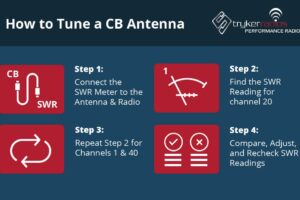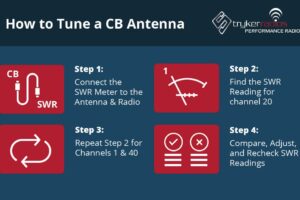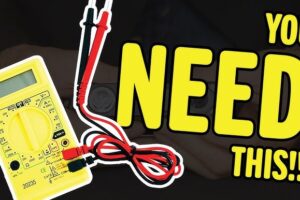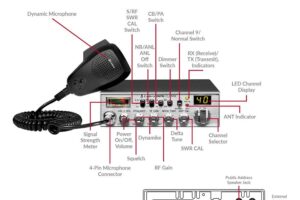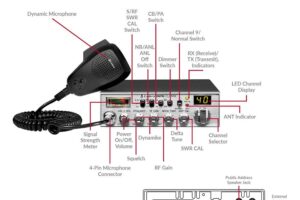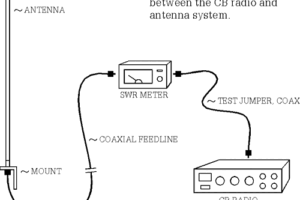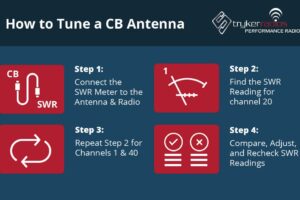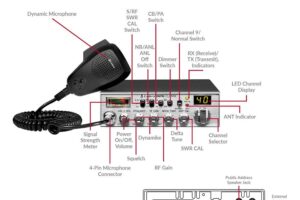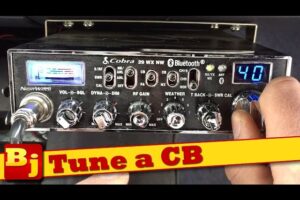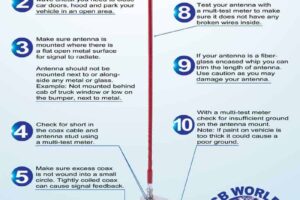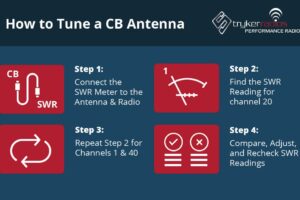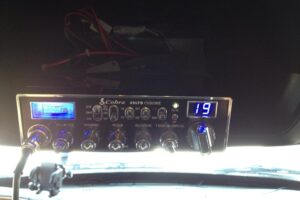Difference Between CB Radio and 10 Meter Radio: Key Distinctions
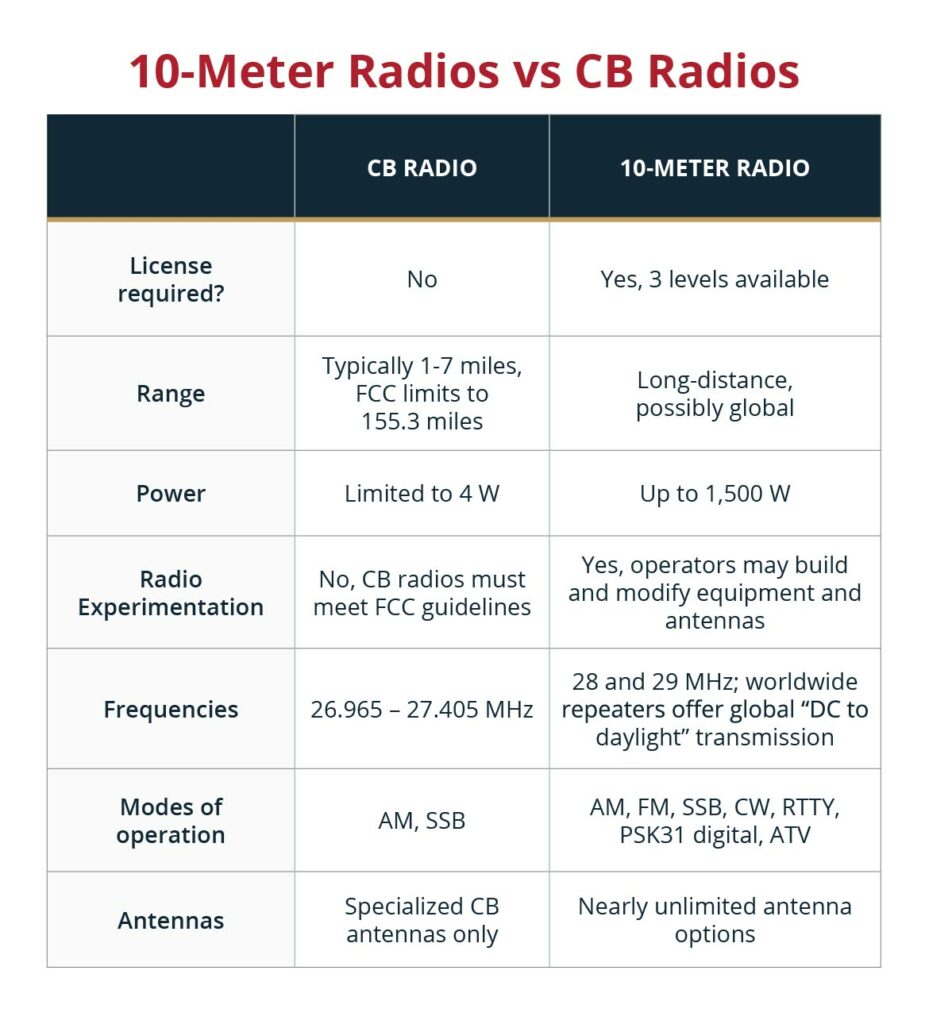
Communication is crucial for many activities. Two popular options are CB Radio and 10 Meter Radio.
Understanding the difference between these two can help you choose the right one. CB Radio, commonly used for short distances, is popular among truckers and hobbyists. On the other hand, 10 Meter Radio is favored by amateur radio operators for longer range communication.
Both have unique features and uses, so knowing how they differ is important. This guide will explore their key differences and help you decide which suits your needs best. Whether you’re a beginner or an enthusiast, this comparison will provide clear insights into these communication tools.

Credit: www.wearecb.com
Basics Of CB Radio
Citizen Band (CB) radio is a popular communication tool. It is widely used by hobbyists and professionals. CB radios are simple to use. They offer a reliable means of communication over short distances.
These radios do not require a license. This makes them accessible to everyone. The technology has been around for decades. It remains a favorite among truckers and off-roaders.
Frequency Range
CB radios operate on a specific frequency range. This range is between 26.965 MHz and 27.405 MHz. The range includes 40 channels. Each channel serves different purposes and users.
The limited frequency range is ideal for short-distance communication. It typically covers a few miles. Terrain and weather can affect this range.
Common Uses
CB radios are commonly used in various fields. Truckers use them to communicate on the road. They share information about traffic and road conditions. Off-road enthusiasts use them for group coordination. They stay connected during their adventures.
CB radios are also used in emergencies. They provide a means to call for help. Their simplicity and reliability make them a valuable tool. They are essential for anyone needing short-distance communication.
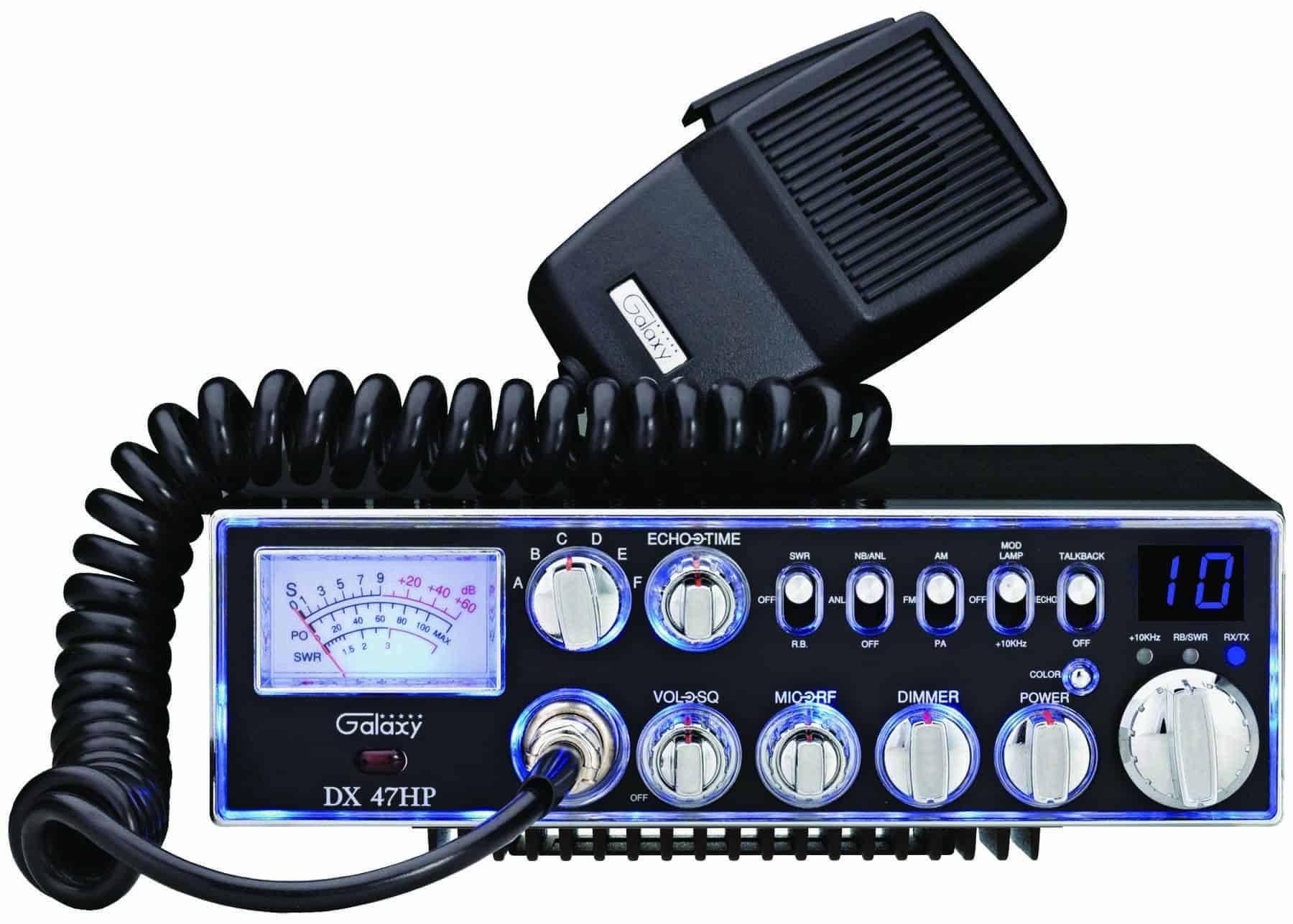
Credit: www.wearecb.com
Basics Of 10 Meter Radio
The 10 meter radio is a type of amateur radio. It operates on a specific frequency range. It is popular among ham radio enthusiasts. This radio is used for long-distance communication. It offers a clear signal and fewer disturbances.
Frequency Range
The 10 meter radio operates between 28.000 MHz and 29.700 MHz. This range is known as the 10 meter band. It is part of the high-frequency spectrum. Signals can travel long distances, especially during peak sunspot cycles.
Common Uses
10 meter radios are used for hobby communication. Ham operators use them to connect worldwide. They participate in contests and emergency communications. Some use it for DXing, which means contacting distant stations.
Technical Differences
Cb radios operate on the 27 MHz frequency, ideal for short-range communication. Meanwhile, 10-meter radios use the 28 MHz band, offering longer range and requiring a license. Understanding these differences helps in choosing the right radio for specific needs.
When diving into the world of radio communication, understanding the technical differences between CB radio and 10-meter radio is crucial. These differences can impact your radio choice based on your needs and preferences. Let’s explore these key distinctions to help you make an informed decision.
Power Output
CB radios typically have a maximum power output of 4 watts for AM transmission and 12 watts for SSB transmission. This limitation is set by the FCC regulations in the United States.
On the other hand, 10-meter radios can offer much higher power outputs, often ranging from 25 to 100 watts or more. This increased power allows for better long-distance communication, especially in varied terrains.
Imagine driving through a mountainous area. A CB radio might struggle to maintain a clear signal, whereas a 10-meter radio’s higher power output can help you stay connected.
Antenna Requirements
CB radios require relatively simple antennas, usually around 102 inches (8.5 feet) in length. These antennas are easy to install and can be mounted on vehicles or base stations without much hassle.
However, 10-meter radios often need more sophisticated antennas. The length can vary significantly, and you might need multiple elements for optimal performance. This complexity can be a challenge but also offers better signal quality and range.
Have you ever tried setting up an antenna on your car? With a CB radio, it’s straightforward. But a 10-meter radio might demand a bit more effort and precision.
Which type of antenna setup are you prepared to handle?
In summary, understanding these technical differences can help you choose the right radio for your needs. Whether you prioritize ease of use and simplicity with CB radios or the advanced capabilities of 10-meter radios, knowing these distinctions is key.
Licensing Requirements
Understanding the licensing requirements for radio operations can be daunting, especially when distinguishing between CB radios and 10-meter radios. Both serve different purposes and come with unique sets of rules. Knowing the regulations can save you from potential fines and ensure you’re using your equipment legally and effectively.
Cb Radio Regulations
CB radios, or Citizens Band radios, are popular for personal and business communication, especially in rural areas. The good news is, using a CB radio doesn’t require a license. You can purchase a CB radio and start using it right away, provided you stick to the 40 designated channels and follow power limits.
However, there are restrictions you should be aware of. Modifying your CB radio to boost its power or using unauthorized frequencies can lead to hefty fines. Always ensure your equipment is FCC-approved to stay on the safe side.
10 Meter Radio Licensing
10-meter radios operate in the amateur radio band and do require a license. To legally use a 10-meter radio, you must obtain at least a Technician Class amateur radio license. This involves passing a written exam that tests your knowledge of radio theory and regulations.
Licensing may seem like a hurdle, but it opens up a world of possibilities in radio communication. With a license, you can explore more frequencies and connect with other amateur radio enthusiasts globally. Are you ready to take your radio hobby to the next level?
Consider the benefits of each and weigh them against your needs. Are you looking for simple, local communication, or do you want to explore international connections? The choice between CB and 10-meter radios often comes down to these factors.
Range And Performance
When it comes to choosing between CB radios and 10 meter radios, understanding their range and performance is crucial. These two types of radios offer different capabilities, influencing how you communicate over long distances. Whether you’re a trucker needing reliable communication on the road, or a radio enthusiast seeking to connect with global stations, knowing the range each radio offers can make a significant difference in your experience.
Cb Radio Range
CB radios, or Citizens Band radios, typically have a range of 1 to 5 miles. This limited range is due to their 4-watt power restriction imposed by the FCC. You might have noticed while driving through dense forests or urban areas, the signal tends to drop. That’s because obstacles like buildings and trees can hinder CB radio signals.
However, conditions such as terrain and weather can affect performance. On a clear day with flat terrain, you might experience slightly better range. Some CB enthusiasts use antennas to boost their signal, but the power limit remains a challenge. Think of CB radios as reliable for short-distance communication, especially useful for local road trips or convoy coordination.
10 Meter Radio Range
10 meter radios, often used by amateur radio operators, offer a significantly larger range. These radios can communicate over hundreds to thousands of miles, depending on conditions. Unlike CB radios, they operate on frequencies that can bounce off the ionosphere, enabling long-distance communication.
You might recall a friend who connected with someone halfway across the world using a 10 meter radio. This expansive range makes them ideal for global communication, especially during peak sunspot activity when signals travel even further. Consider the 10 meter radio if you want to explore international connections or participate in contests.
Have you ever considered how weather impacts radio signals? A storm can drastically reduce range and clarity. This is something both CB and 10 meter radio users need to account for. Understanding these variables can help you choose the right radio for your needs and optimize your communication experience.
Popular Applications
Understanding the popular applications of CB radios and 10-meter radios can help you decide which one suits your needs. These radios have distinct uses among hobbyists and professionals. Let’s explore how each group benefits from these communication tools.
Hobbyist Use
CB radios are popular among hobbyists for casual communication. Many people use them for road trips. They help coordinate with friends on the road. They are also used in off-road adventures. Off-road enthusiasts use CB radios to stay connected. The affordable cost makes them accessible for many users.
10-meter radios, on the other hand, attract amateur radio operators. Known as “hams,” these operators use them to make long-distance contacts. They enjoy the challenge of reaching far-off locations. The 10-meter band allows for more power and better range. This makes it exciting for serious hobbyists.
Professional Use
In professional settings, CB radios are essential for truck drivers. They use them to share traffic updates. They also warn each other about road hazards. This helps in ensuring safety and timely deliveries. Construction workers also rely on CB radios. They use them to communicate on large job sites. This improves coordination and efficiency.
10-meter radios serve a different professional purpose. They are often used in maritime communication. Ships use them for long-range contact. This is crucial for safety at sea. Some emergency services also use 10-meter radios. They need reliable communication during disasters. The higher power and longer range are vital in such situations.
Choosing The Right Radio
Choosing the right radio can be confusing. Both CB radios and 10 meter radios serve different purposes. Understanding their differences is key to making an informed decision. This section will help you consider various factors to choose the right radio for your needs.
Considerations For Users
First, think about your usage. CB radios are great for short-distance communication. Truckers and off-road enthusiasts often use them. They are easy to operate and require no special license. On the other hand, 10 meter radios are better for long-distance communication. Amateur radio operators use them. They need a license to operate. So, consider your needs and experience level before choosing.
Cost And Availability
Cost is another important factor. CB radios are affordable and widely available. You can find them in many electronics stores. They are also easy to install. In contrast, 10 meter radios tend to be more expensive. They are less common in regular stores. You might need to visit specialty shops or buy online. Remember, investing in a 10 meter radio also means spending on a license.
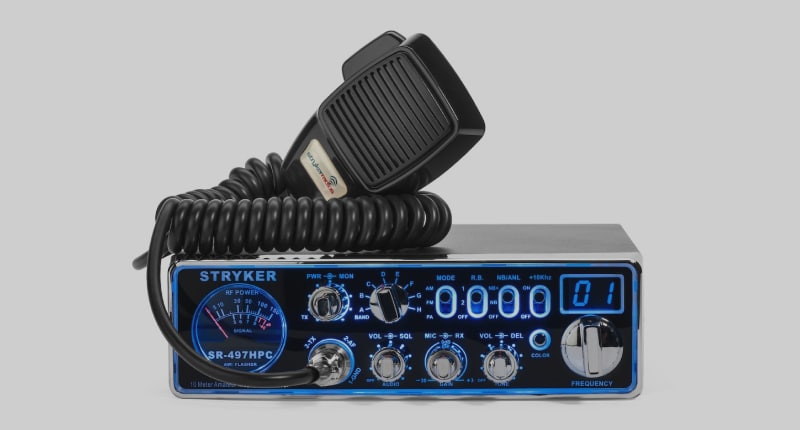
Credit: strykerradios.com
Frequently Asked Questions
Is A 10-meter Radio The Same As A Cb?
A 10-meter radio is not the same as a CB radio. 10-meter radios operate on amateur bands, while CB radios use 27 MHz frequencies for public communication. CB requires no license, whereas a 10-meter radio typically needs a ham license for operation.
Both serve different purposes and user bases.
Do Truckers Use 10-meter Radios?
Yes, truckers use 10-meter radios. These radios offer greater range and clarity compared to CB radios, enhancing communication on the road.
What Is A 10 Meter Band Good For?
The 10 meter band is ideal for long-distance communication. It offers great performance during solar maximum periods. Ham radio operators use it for DXing and contests.
What License Is Needed For A 10-meter Radio?
You need a General Class or higher amateur radio license for a 10-meter radio.
Conclusion
Choosing between a CB radio and a 10-meter radio? Consider your needs. CB radios are great for short-range communication. Easy to use, no license needed. Perfect for truckers and hobbyists. 10-meter radios offer longer range. They require a license but offer more features.
Ideal for ham radio enthusiasts. Think about your experience and goals. Both have unique benefits. Your choice depends on what you value most. Whether it’s simplicity or range. Make an informed decision. Enjoy exploring the world of radio communication!

